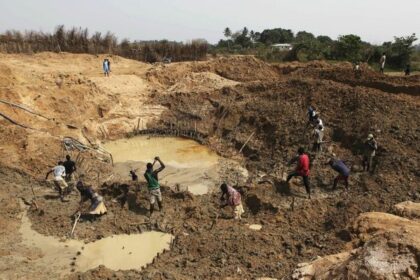De Beers moves aggregation of worldwide production to Botswana
Milestone in transformation of Botswana into a global diamond centre. Press release.
Sign-up for La Lettre from R&M to get the essentials of current affairs in the diamond industry and privileged access to the articles published below
We keep your data private and only share it with third parties that make this service possible. Read our Confidentiality Policy for more information.
Milestone in transformation of Botswana into a global diamond centre. Press release.

Exactly 80 years after Sierra Leone’s first alluvial deposit was found along the Shongo stream, the country’s diamond scene has finally entered into an entire new era: it is joining the ranks of Botswana, Canada, Russia and Australia by becoming a predominantly hard-rock kimberlite diamond-mine producer.

The 2011 global production data published by the Kimberley Process (KP) last week presented a vastly different market scenario than what is the reality today. Then again, a very different atmosphere has engulfed the industry in the past seven months, influencing a drop in demand for rough and its resulting polished.
Global production of rough diamonds in carats continues to decrease, as evidenced by the data of the Kimberley Process. Diamond output in 2011 reached 123.989 million carats, 3.4% down compared with 2010.
Diamond miners, if they have the option, won’t decrease prices. It’s not as obvious as it may sound – many will prefer keeping the goods than lower prices. The benefit of what is referred to in the market as having “a strong hand“.

Botswana declined to exercise a preemptive right to raise its stake in De Beers, which allows mining giant Anglo American to complete its planned purchase of a share in the firm from the Oppenheimer family (CHL) for $5.1 billion.
Global diamond production rose 26 percent to $14.41 billion in 2011 as rough diamond prices soared during the year, Kimberley Process data showed. By volume, production fell 3 percent to 123.99 million carats. The average price of production rose 31 percent to $116.19 per carat.
Predicting the diamond market can be tricky at times, particularly for those on the supply side of the pipeline. Miners, generally loath to scale down operations, have understandably been treading cautiously in 2012. The pledge made last week by De Beers to monitor production in line with sightholder demand, should therefore not be taken lightly.
The complicated dance between De Beers sightholders and the London-based brokers who work with them is about to get considerably more complex with the imminent move of the sights to Gaborone. It is anticipated that the first full Gaborone sight will take place in January of 2014. Diamond brokers are a vital link in the […]
It may have taken a downturn to prove it, but Diamond Trading Company (DTC) sightholders are sensing that the game has changed. As a result, there was an underlying anger emanating from this week’s DTC sight as prices softened a mere 3 percent and De Beers supply remained unprofitable.

Press Release: On Tuesday, Antwerp’s Diamond Trading Company (DTC) sightholders, diamond brokers and the AWDC, the umbrella organization representing the industry, paid tribute to Nicky Oppenheimer, the retiring chairman of the De Beers Group.
The diamond market in the first half (H1) of 2012 vastly differed from that in H1 2011. From liquidity to polished prices to consumer demand, conditions were clearly not as robust. As macroeconomic conditions continue to deteriorate, the diamond market continues to soften, but major rough diamond suppliers De Beers and Alrosa are resisting price […]